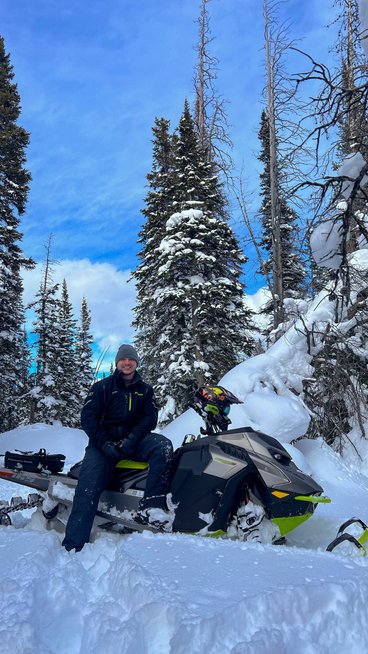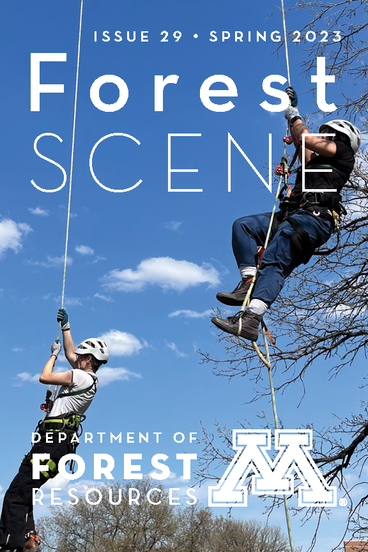
Meet Adam Langer, who is halfway through his junior year in Forest and Natural Resource Management (FNRM): Parks and Protected Area Management and hopes to eventually work for the U.S. Forest Service. He’s also just one member of the department’s student body who’s balancing full-time work while pursuing a degree – and, remarkably, doing so across two states. Here, Langer tells us how he does it – and why.
How do you balance working full time and studying forestry?
I work for an excavating company based in Cumberland, Wisconsin. My main role is to operate heavy equipment and I run machines like skid steers, excavators, and bulldozers. I work during their busiest period, which lasts about 7 – 8 months and requires me to put in 60 – 75 hour work weeks.
Because of the high demand of my job, attending school in St. Paul during summer or fall semesters has not been possible yet. My advisor, Tracene Marshall, has been great in helping me build a graduation plan that allowed me to take all of my spring classes first. Then I will have two fall semesters left to complete my undergraduate degree.
What do you find interesting about forestry?
How many options a person has to pursue for a career! There are multiple federal and state agencies, as well a wide range of private sector industries and jobs to choose from. With so many different choices, finding a job that fits you is definitely possible.
What are your career goals?
Right after I decided to major in forestry, I met a Patrol Captain for the U.S. Forest Service while snowmobiling in the Medicine Bow National Forest. After he checked our snowmobiles for valid trail passes, I told him about going to school for forestry and he told me about his role in the USFS. Ever since then, I’ve worked toward pursuing a similar job, one that allows me to help others recreate and enjoy our public forests, while also being able to have an impact on preservation.
What do you wish more people understood about forestry?
I wish more people understood the importance of working with other stakeholders in order to find the best management and use plans for our forests. Forests have a multitude of use and non-use values, and multiple stakeholders. In order for all parties to have a beneficial experience, they need to work together, not against each other.
Why is FNRM important for our future?
Forests provide economic, ecological, recreational, aesthetic, and spiritual values – and they need to be preserved in order to continue doing so. Yet cities are constantly growing to meet the needs of our ever increasing populations, further reducing the existence of natural areas and opportunities for people to experience nature. More than ever, we need to preserve the forests and natural resources we have left, in order to provide for future generations.

The Forest Scene newsletter is published biannually in the spring and fall, featuring stories and updates from the Department of Forest Resources. Readers can download issue 29 of Forest Scene as an interactive PDF that is fully tagged and compatible with most screen readers, or read the individual stories here in a web-based format:
- Department Message from Kristen Nelson
- Faculty Retirement: Paul Bolstad
- ESPM Student Spotlight: Kylee Gregory
- From Student to Experts: Speaking With Your Audience – Communication tips from Forest Resources Professor and Extension Specialist Charlie Blinn
- Alumnus Spotlight: Steve Cook, Class of 1975
- Spring Semester Highlight: The Tree Ascension Club
Image description: Adam Langer, a young Caucasian man, rests on a snowmobile mid-trail. He's wearing dark snowmobile gear and is in front of tall, snow-covered evergreens and a bright blue sky.
